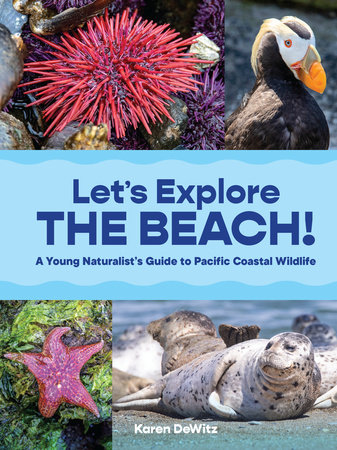Welcome to the Pacific Coast! There is so much to discover here if you know where to look. The Pacific coastline is home to tens of thousands of different species of marine plants and animals. Some of these creatures have been around since before the dinosaurs. There are signs of life everywhere, and learning about them makes the beach a new adventure every time you go.
How to Use This Book This guide is written to help young naturalists— and anyone else curious about the amazing wildlife along the Pacific coast— know what to look for while wandering the shore. Does it cover everything you might come across? Wonderfully, no! (But it definitely covers a lot.) You’ll start to see new things you’ve never noticed before once you really start looking. What a great reason to keep going back to the beach!
The book is divided into three parts: tide pools, shoreline, and shorebirds. There’s lots of overlap in the real world, but in this book each section highlights a different collection of Pacific coastal life and other cool treasures. You will learn about a variety of animals, seaweed, and interesting nonliving finds along the Pacific coast. For each living entry, there are six types of information:
NAME: What is it called?
APPEARANCE: What does it look like?
FOOD: What does it eat, and/or what eats it?
HABITAT: What kind of environment does it like?
REPRODUCTION: Does it have babies, lay or release eggs, or just clone itself?
RANGE: Where does it live?
There will also be hints to help you find and appreciate treasures like agates, shells, and fossils as you wander the shore.
The Ocean To get the most out of a trip to the coast, start by thinking about its big-gest giant: the Pacific Ocean— a single body of water that covers almost a third of the earth’s surface. The Pacific is bigger than all of the land of all the continents on Earth put together. It has deep places that humans haven’t explored and life forms people have never seen. A trip to the Pacific coast puts you on the edge of that huge, unknown mystery. The wind, waves, and wildlife are constantly changing. No matter how many times you go back to the same beach, you may find something new with each visit.
Copyright © 2024 by DeWitz, Karen. All rights reserved. No part of this excerpt may be reproduced or reprinted without permission in writing from the publisher.














